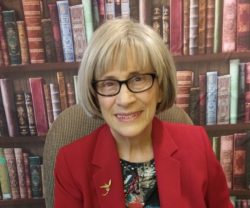My hunch is that the majority of those well-meaning folks who say, “When I see you, I don’t color,” or a variation, have no idea how exhaustive it can be to many Black folks. And to Black folks who hear this constantly, the typical response is usually a deep inhale and a …. “well, here we go again!”
Case in point is Oprah Winfrey’s latest magazine “O” with an advice column headlined, “How to Deal with Your White Friends”– advice for Black women feeling worn down by the neediness of others to help them deal with racial issues.”
So why this recent surge in interest in racial issues, Black ones in particular?
Continue reading Education about Racial Issues – Who educates who? – by Terry Howard


 As he’s laid to rest, there are no shortage of salutes to Congressman John Lewis, the formidable civil rights activist and legislator from Georgia who departed this earth on July 17, 2020, at the age of 80.
As he’s laid to rest, there are no shortage of salutes to Congressman John Lewis, the formidable civil rights activist and legislator from Georgia who departed this earth on July 17, 2020, at the age of 80. Our virtual Town Hall, The Future of Diversity Amid Pandemic, took place on Sept. 14, 2020 with help from multiple donors. Your generous support of our mission to Promote Diversity, Foster Inclusion and Counteract Hate is much appreciated. I can’t thank you enough for joining me in these DEI efforts to make a lasting real-world difference – needed now more than ever.
Our virtual Town Hall, The Future of Diversity Amid Pandemic, took place on Sept. 14, 2020 with help from multiple donors. Your generous support of our mission to Promote Diversity, Foster Inclusion and Counteract Hate is much appreciated. I can’t thank you enough for joining me in these DEI efforts to make a lasting real-world difference – needed now more than ever.